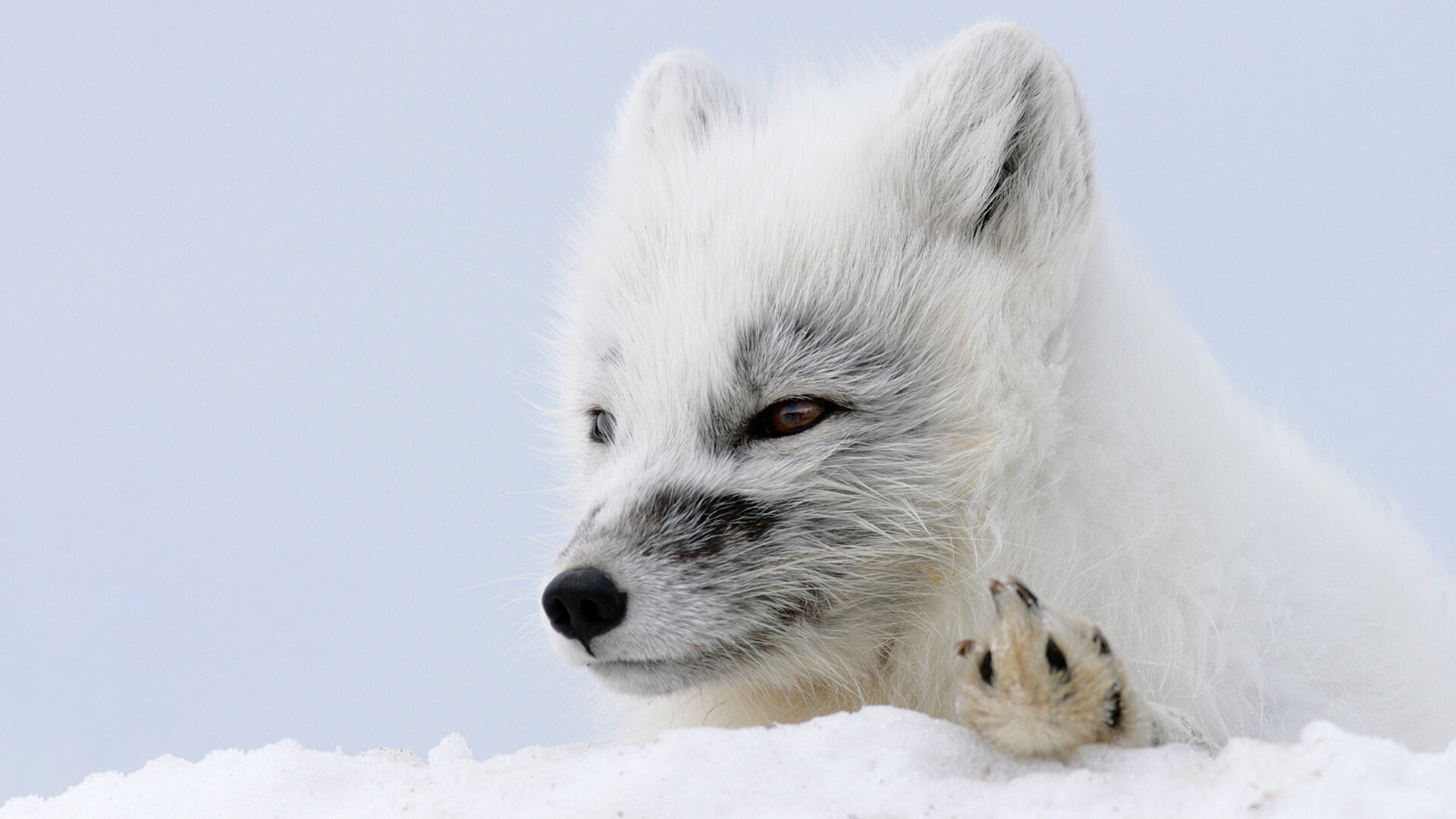
Arctic fox, Kolguev Island, Barents Sea, Russia.
Legion MediaRemember how we told you about wild foxes that steal leg wrappings and flashlights from people? In Russia, foxes can be found in most regions, from Kaliningrad on the Baltic Sea to Vladivostok on the Pacific Ocean. In the Arctic, foxes have a close relative – the Arctic fox (pesets). Despite having the cutest of features, it’s the most prominent thief and bully among the wild animals of the North.
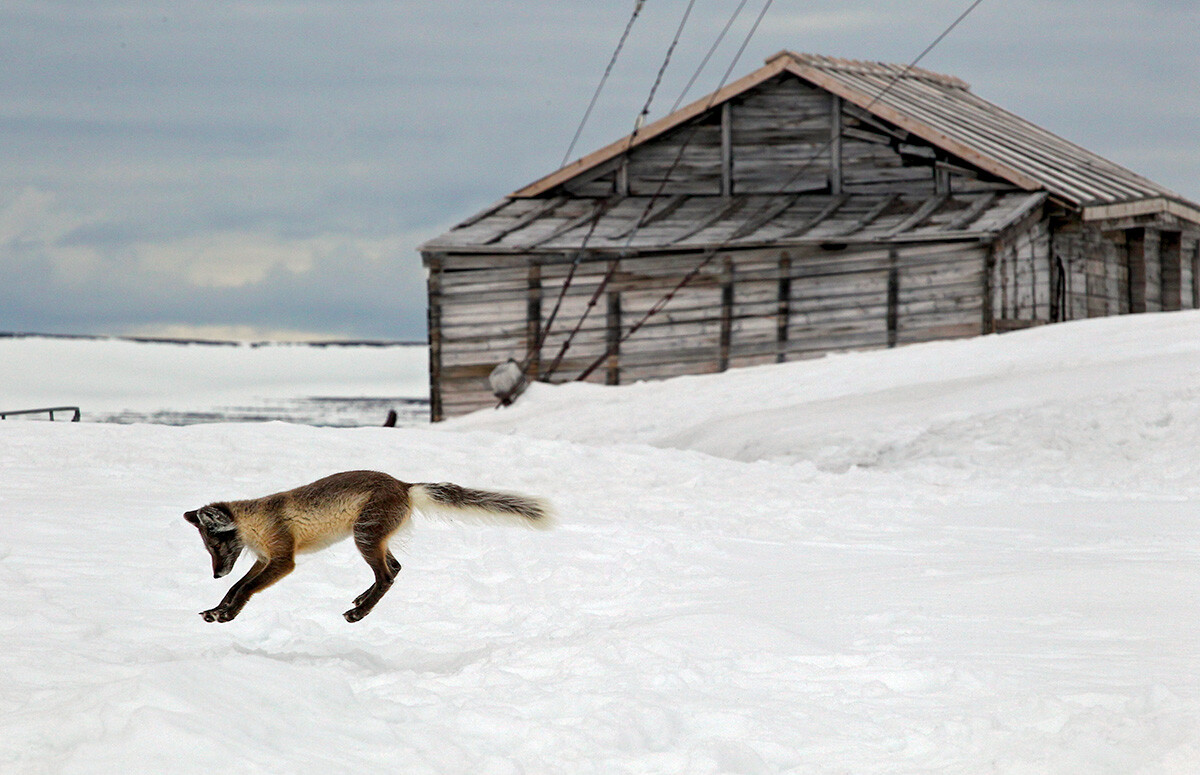
Hunting a mouse on Franz Josef Land.
Vera Kostamo/SputnikUsually, wild animals avoid humans, but Arctic foxes (and regular foxes, of course) have long figured out the link between people and food. No, they don’t eat people, but they know that humans often have something tasty that they can grab.
The Arctic fox by nature is a small predator (weighing up to 8 kilos); it’s similar to a fox but with white fur. It hunts small rodents like mice and lemmings. This is what it looks like.
These Arctic foxes live in the polar regions of Eurasia and America, but they’re especially numerous on islands and even drifting ice in the Arctic Ocean. They prefer the hilly tundra and even arctic deserts.
At the same time, Arctic foxes are not at all afraid of our civilization; if a human is fishing nearby, they’ll surely approach to investigate. And they won’t refuse a treat. However, if you don’t offer anything to an Arctic fox, it most likely will try to steal something.
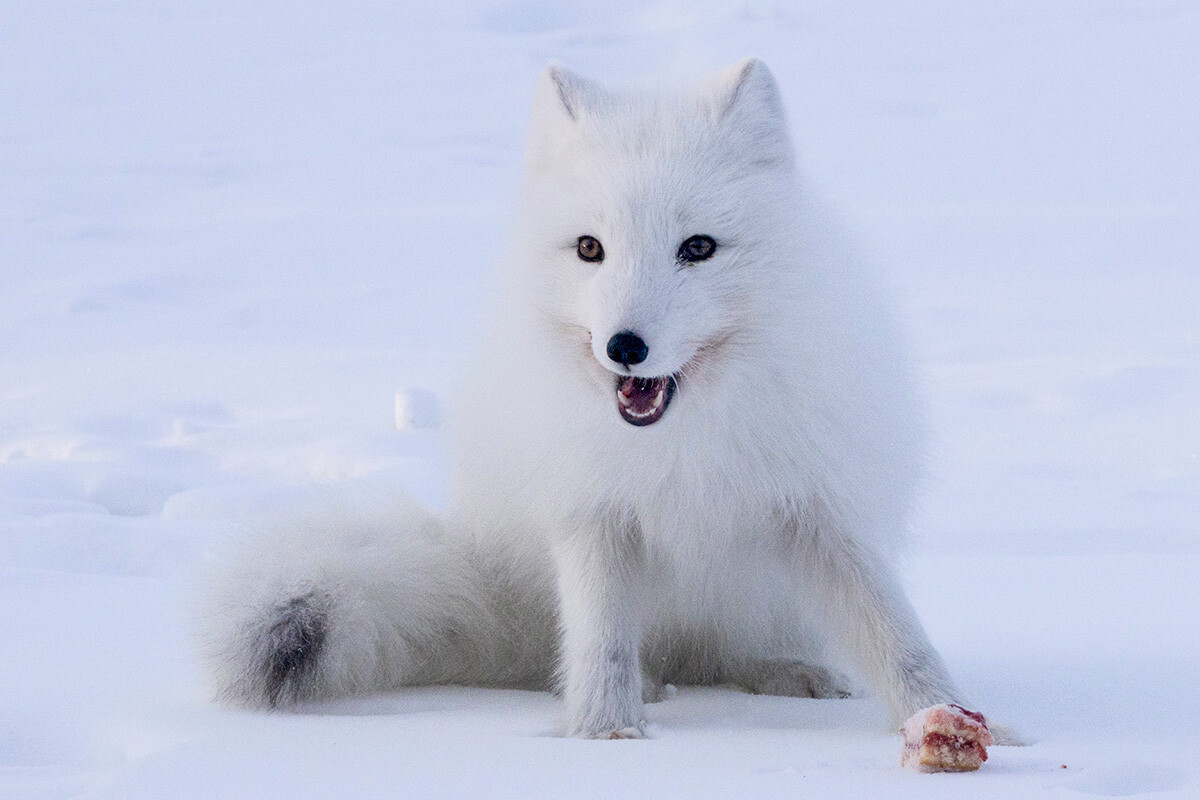
An arctic fox of Vorkuta eats a piece of cake thrown by passengers of Khorota railway station.
Lana Sator/Anadolu Agency/Getty ImagesThis is why people who live and work in the Arctic say that you have to hide all your food from Arctic foxes. If there’s something that smells good, they can easily grab an entire bag with food in a heartbeat. Do they really love to gouge themselves? No, in fact they are merely keen to stock up on food just in case.
Since Arctic foxes are similar to regular foxes in terms of their behavior (they belong to the Canidae family), humans try to tame them by giving them food. Arctic foxes really can be “friends” with people and let humans pat them. For something tasty, of course.
Arctic foxes can be daring not just with people but with other animals, too. They’re not afraid to approach their Arctic neighbors, such as polar bears, and might also try to steal their catch.
Imagine that you’re on a journey to the Arctic tundra that’s covered by permafrost and where there’s almost no vegetation. Where would you live if you were an Arctic fox? It turns out that these animals dig holes to serve as homes. But these are not just any holes; rather, they’re a complex underground system of tunnels.
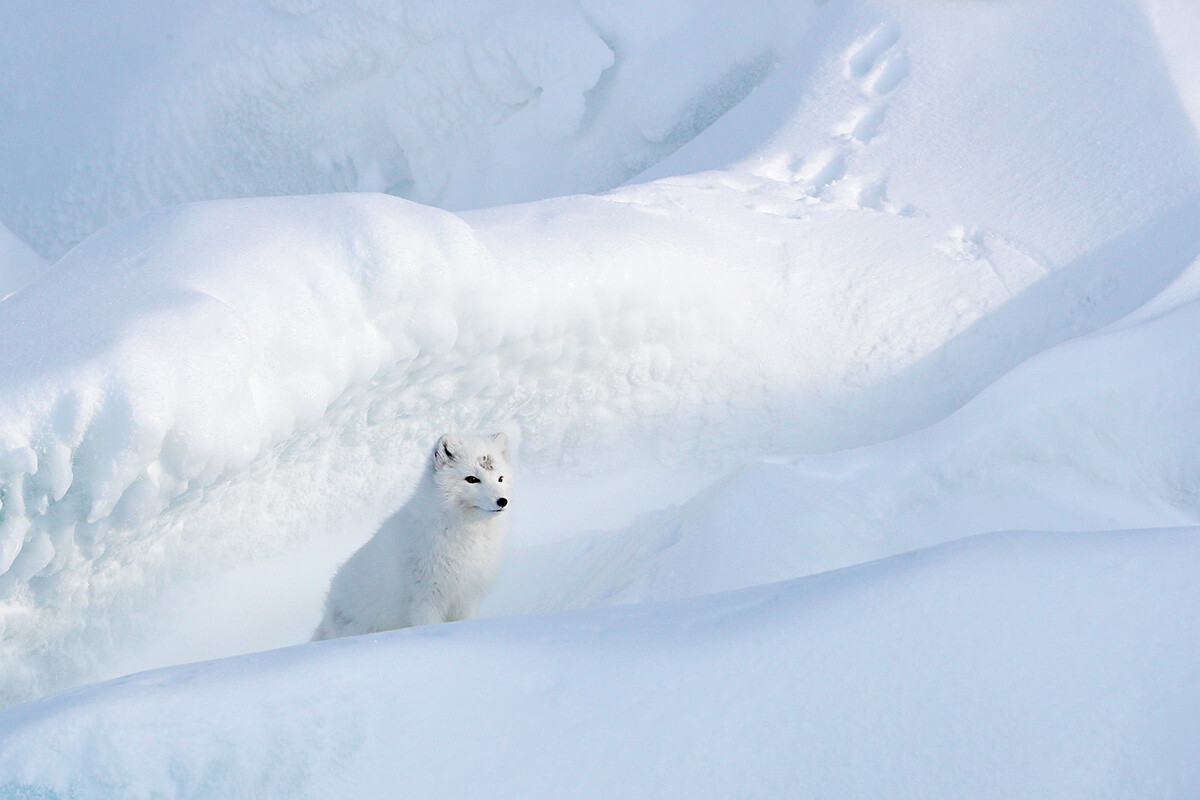
An Arctic fox is seen on Alexandra Land, an island of the Franz Joseph Land archipelago.
Gavriil Grigorov/TASSThey choose places that have some elevation (it’s easier to dig since the soil is softer and it’s not that windy), or they might occupy already dug-out holes. But then they expand them with a network of complex tunnels. Fresh holes have up to 10 exits, but the older ones, which can be in use for decades, have up to 80 exits. Extended families of the Arctic fox can use a single underground abode for generations if there’s enough food for them in the surrounding area.
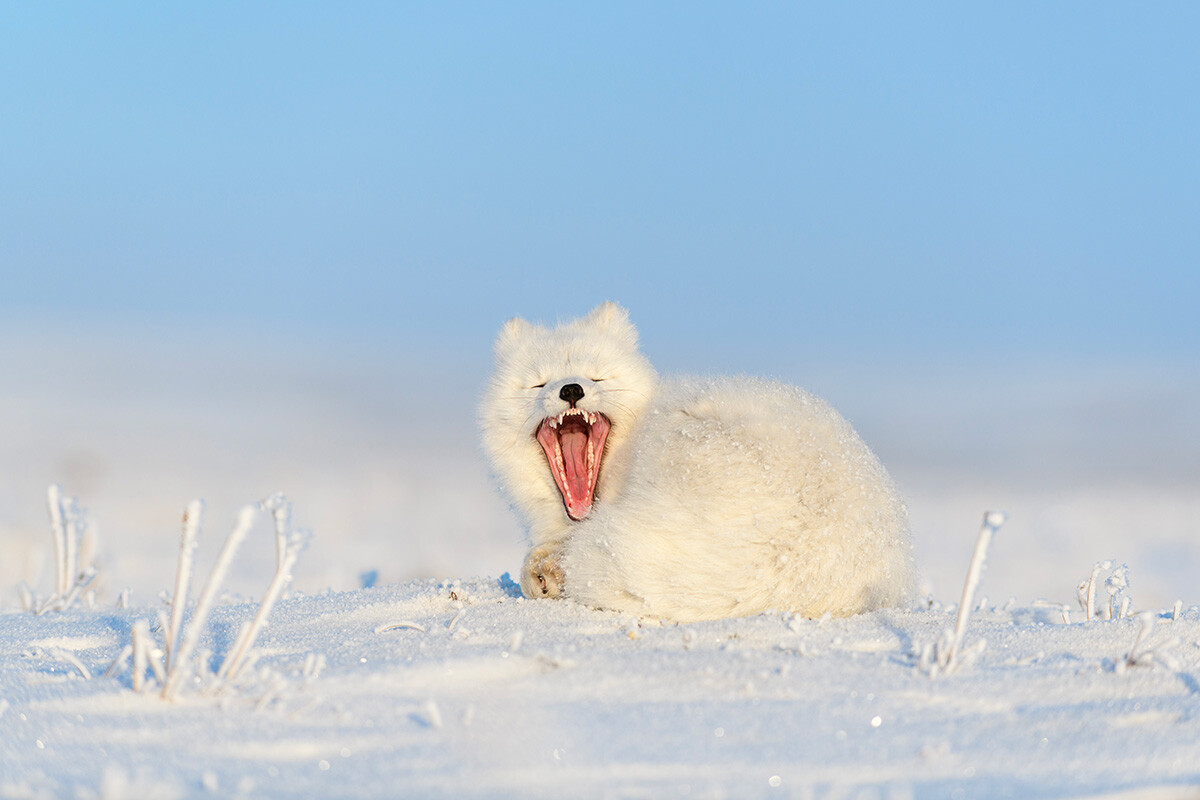
Arctic fox lying in a snowy field, Russia.
Alexey Seafarer/500px/Getty ImagesNature has endowed Arctic foxes with an incredible survival mechanism. The Arctic regions are very windy and have temperatures down to -70°C. Despite this intense cold, Arctic foxes don’t go into hibernation and their metabolism does not slow down (it even increases). On the contrary, in the winter they’re in their best shape.
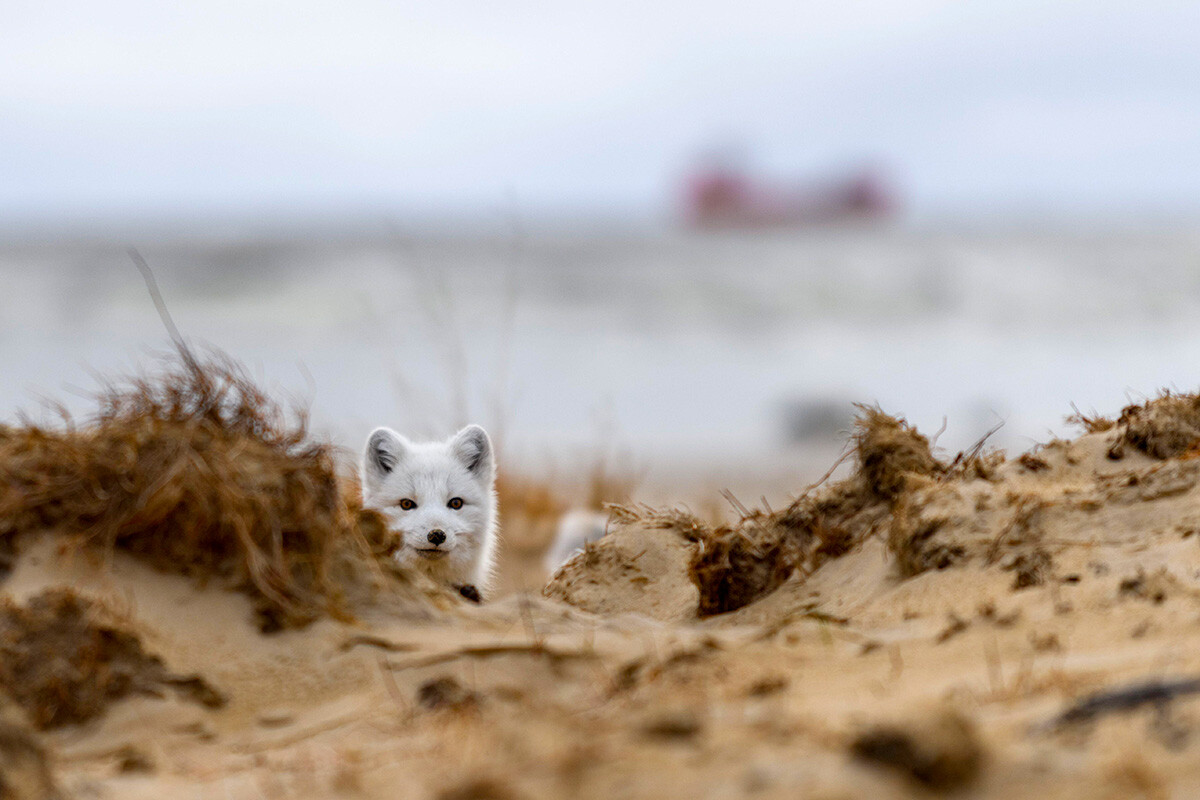
Arctic fox. Spitsbergen.
Legion MediaFirst of all, the Arctic fox has very thick and warm fur; this is why they have always been one of the main targets of the fur industry. Arctic fox fur is one of the most durable; and you can wear a coat made from these furs for more than 10 seasons. Second, Arctic foxes sleep or rest curled up in a ball, which helps them to minimize the loss of body heat. Their short legs and rounded ears facilitate the same effect. Finally, Arctic foxes can use their fluffy tail as a blanket.
In summer and winter Arctic foxes seem to be different animals altogether. It’s quite simple though: Arctic foxes morph twice and they change their coats with the seasons. In fall and in winter they’re white; and they’re the fluffiest during January-February when the cold is the harshest. But in spring and in summer they’re gray or dark-brown, and one and a half times leaner.
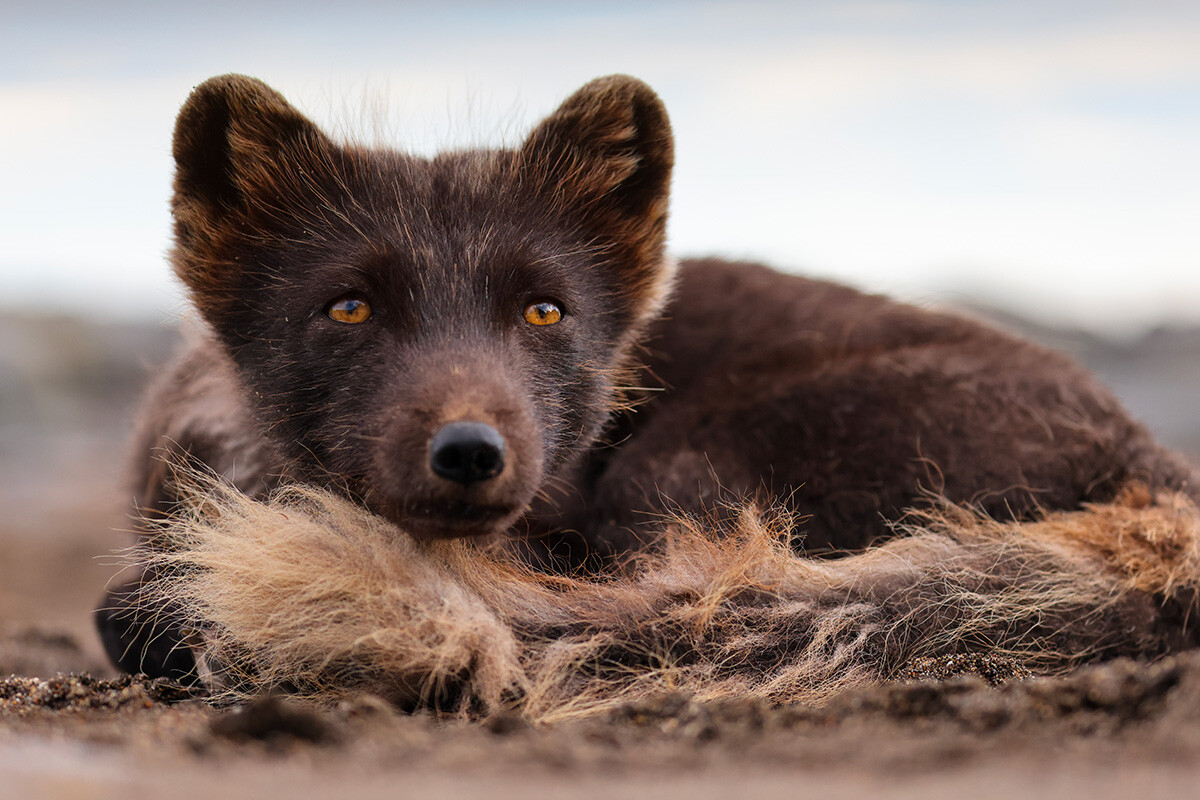
A blue fox is seen on Yankicha Island of the southern Kuril Islands.
Yuri Smityuk/TASSAside from that,a very rare type of Arctic fox lives in the Far East; they’re included in Russia’s protected species list. The most famous are blue Arctic foxes that inhabit several secluded islands on the southern Kuril Islands in the Far East. Also, the Commander Islands have a larger subspecies of blue Arctic foxes – Mednovsky Arctic foxes.
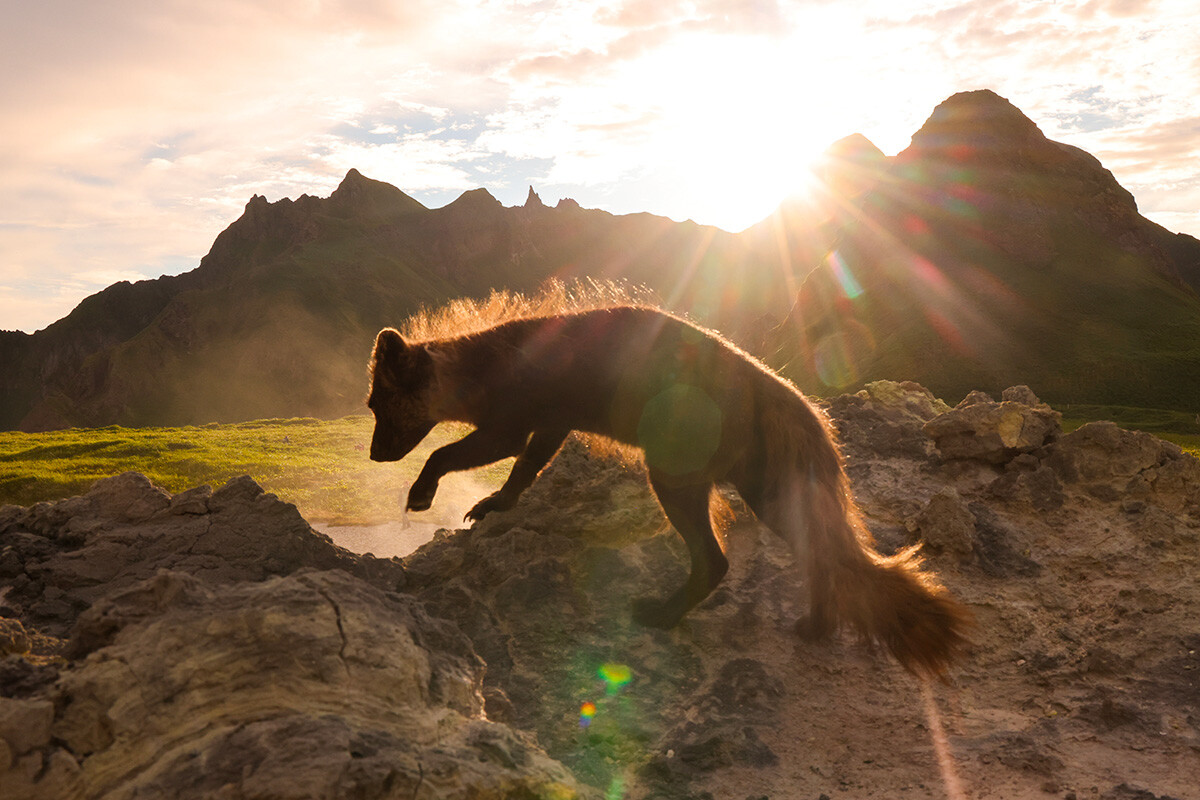
A blue polar fox runs away.
Yuri Smityuk/TASSThey are distinguished by the fact that their coat is the same color in both winter and summer (gray-brown). Only during the summer are they leaner. However, in rare cases you can find light-gray Arctic foxes.
In this video blue Arctic foxes actively assist people filming a report about the Commander Islands, asking only for fish in return.
Dear readers,
Our website and social media accounts are under threat of being restricted or banned, due to the current circumstances. So, to keep up with our latest content, simply do the following:
Subscribe to our Telegram channel
Subscribe to our weekly email newsletter
Enable push notifications on our website
Install a VPN service on your computer and/or phone to have access to our website, even if it is blocked in your country
If using any of Russia Beyond's content, partly or in full, always provide an active hyperlink to the original material.
Subscribe
to our newsletter!
Get the week's best stories straight to your inbox